I’ve recently returned from a 7-week holiday across Greece and Türkiye. I visited numerous ancient sacred sites such as the Acropolis, Eleusis, and Delphi. I’m still processing it all and will blog more about it in the future. Since I dedicate October to Hekate, I started writing about this journey last week with the subject of my visit to Stratonikeia, a city strongly associated with the enigmatic goddess. I visited the Temple of Hekate at Lagina on the following day.
Before I begin, I have to admit that I’m disappointed with my photos of the site. I was so astounded that I didn’t take as many pictures as I would have liked, and I didn’t take a single video. I added “to take more and better photos and videos” to my list of reasons to return to Stratonikeia and Lagina.
The Sanctuary of Hekate at Lagina
The Sanctuary of Hekate is enclosed by a wall (peribolos) with three entrances that lead to the stoa, a covered area; spectators could sit along the western side. The main entrance, which lies at the southwest corner of the sanctuary, is the propylon, a freestanding monumental gateway where the sacred road from Stratonikeia reached the sanctuary. The other two gates, or pylons, are in the middle of the northern and southern walls of the temenos, or sacred space. Today, the path from the parking lot leads to the southwest corner of the sanctuary. You can walk through the propylon, as I did, in the footsteps of Hekate’s priestesses and priests and Stratonikeia’s citizens, and descend the steps into the temenos.
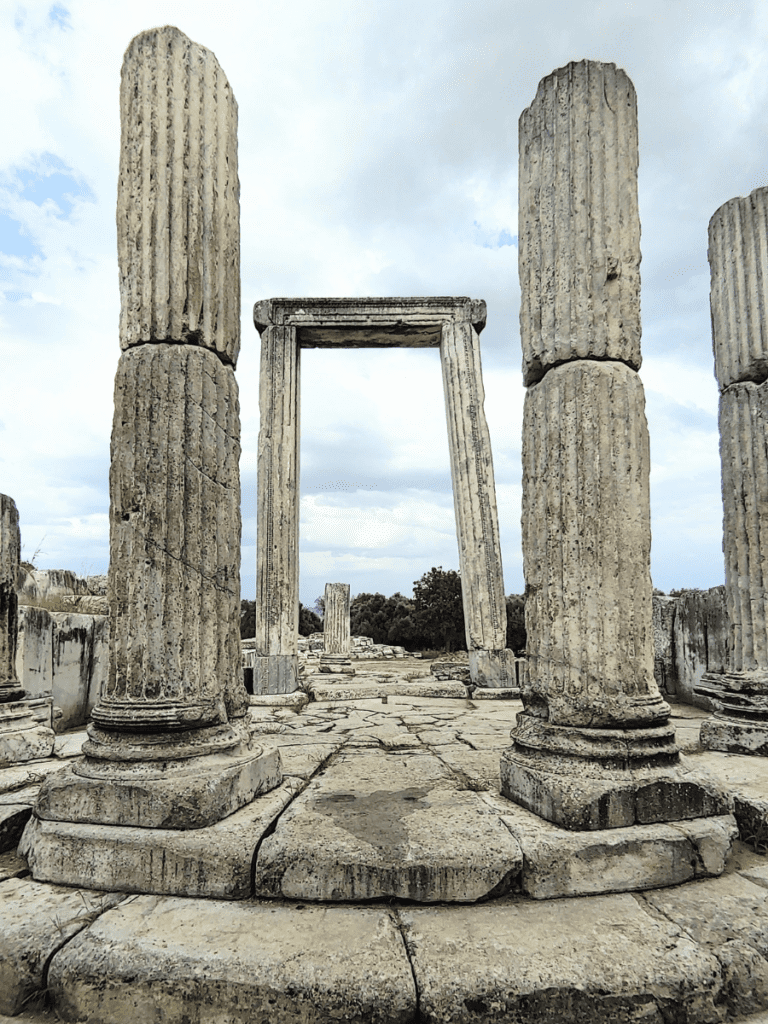
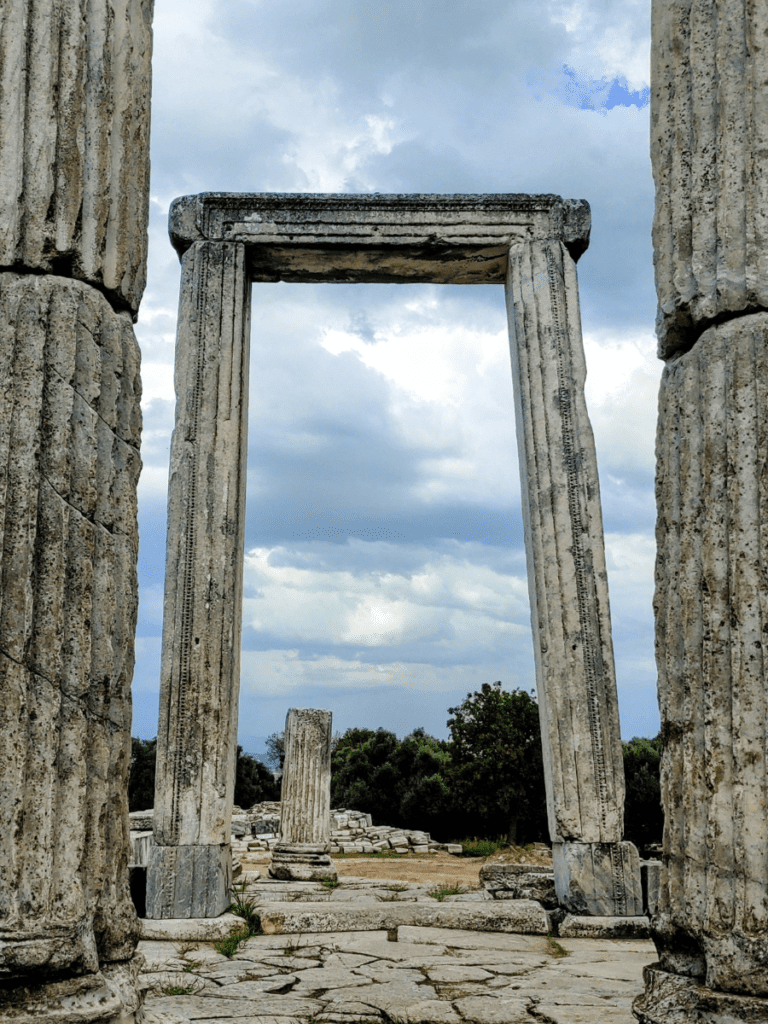
I visited Stratonikeia and Lagina with my teacher and friend, Yeshe Matthews, of the Mt Shasta Goddess Temple. I joined her and two others for a few days during their pilgrimage in Turkiye. Yeshe led us through the propylon with song, and I was moved to tears. By this time, I’d visited the Acropolis, Eleusis, Delphi, Knossos, the Temple of Artemis at Ephesus, and others, and they were all emotional experiences, but none of them made me cry.
Abdullah Demirell, who has served the sanctuary as its guardian for over 20 years, gave us a tour. For reference, here is a map of the site.
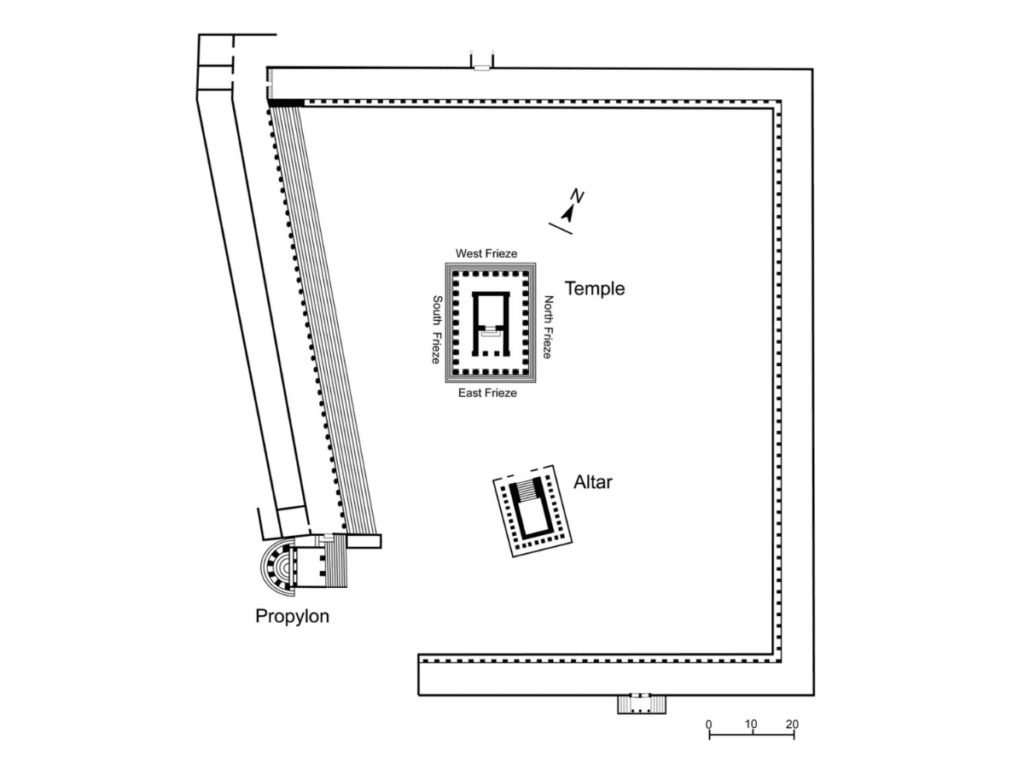
Abdullah showed us what was recently excavated (latrines near the propylon), where the altar once stood, and where we could hold our ritual in the cella, the inner chamber of the temple. He even held space for us, protecting us from a few gawkers and tourists wanting to take photos.
The altar table stood in the centre of a marble building decorated with Corinthian columns and relief sculptures. What is left of it lies in pieces throughout the area, along with parts of columns, their Corinthian capitals, and stone coffers, sunken panels used to decorate the temple’s ceiling.
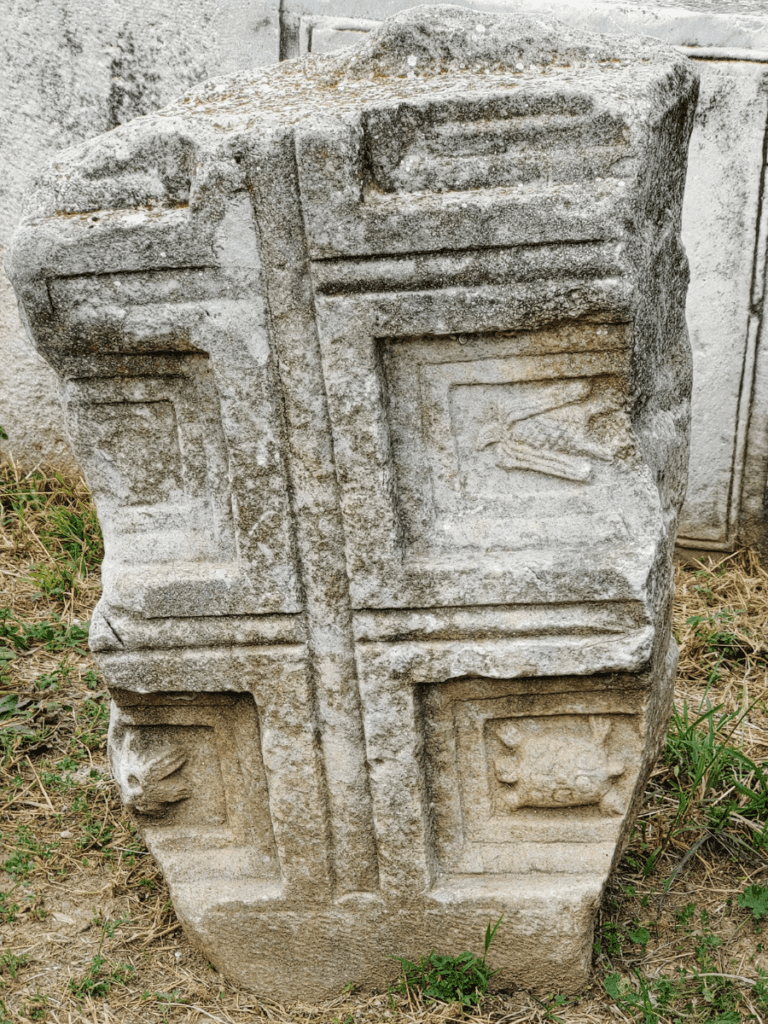
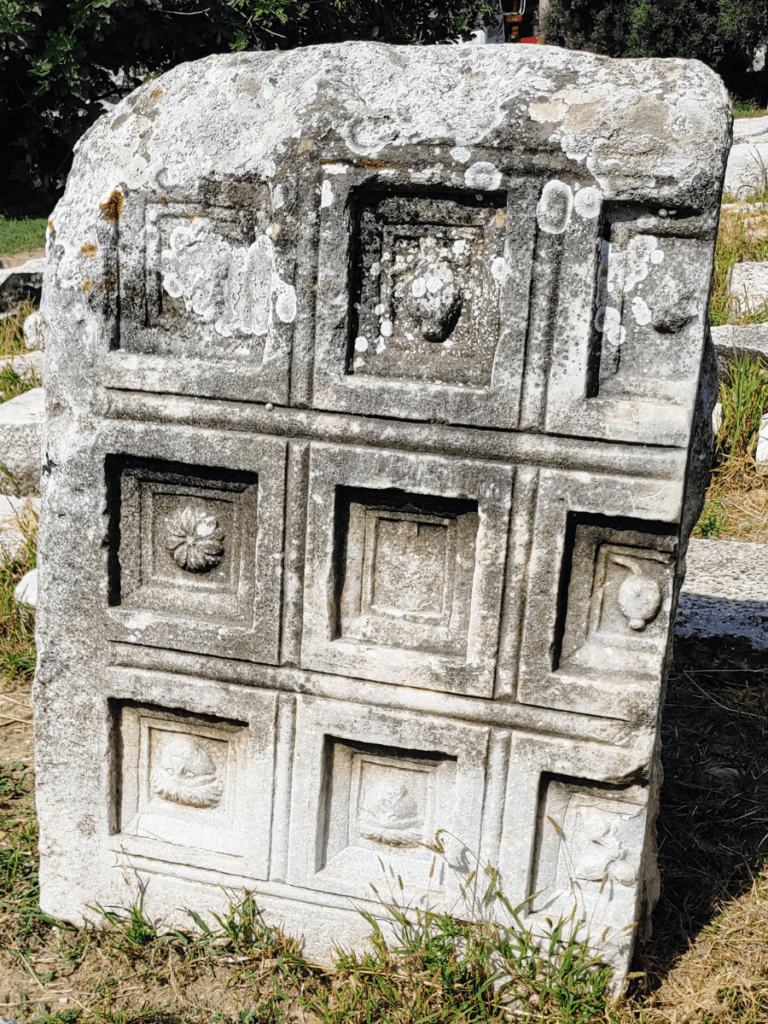
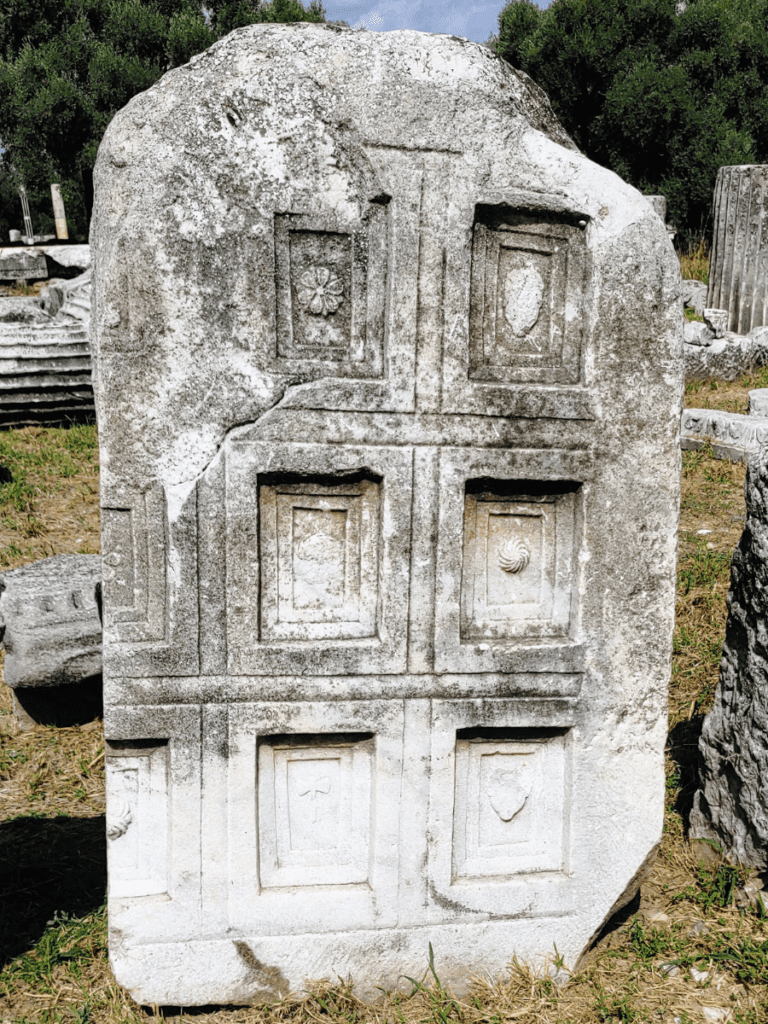

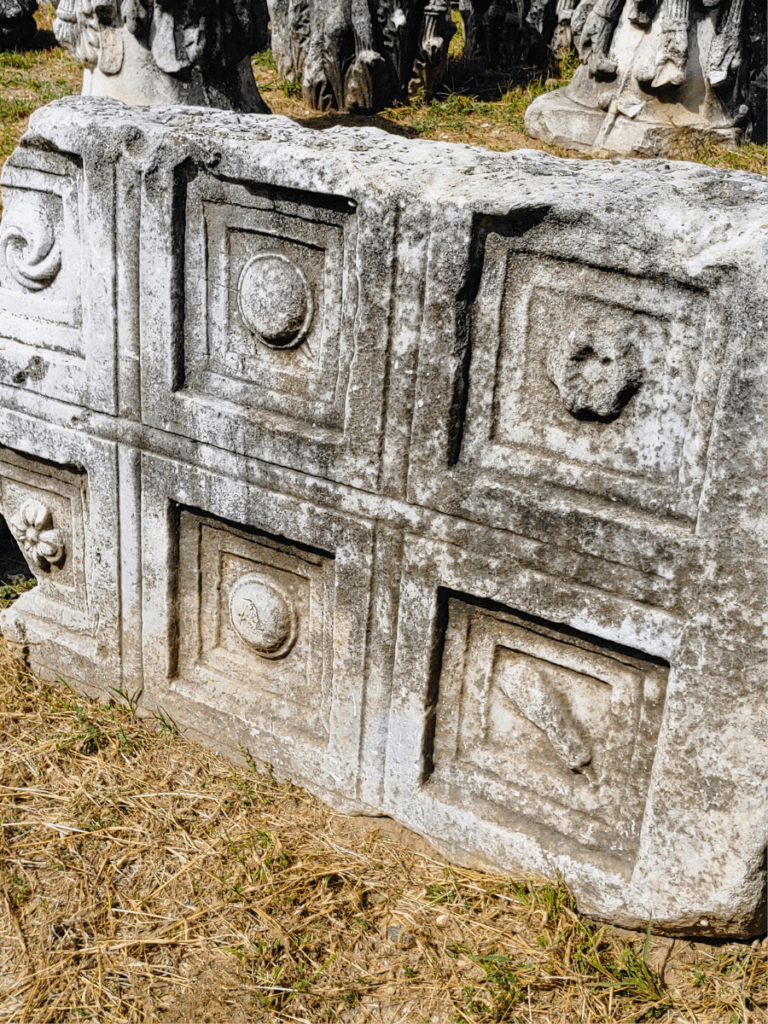
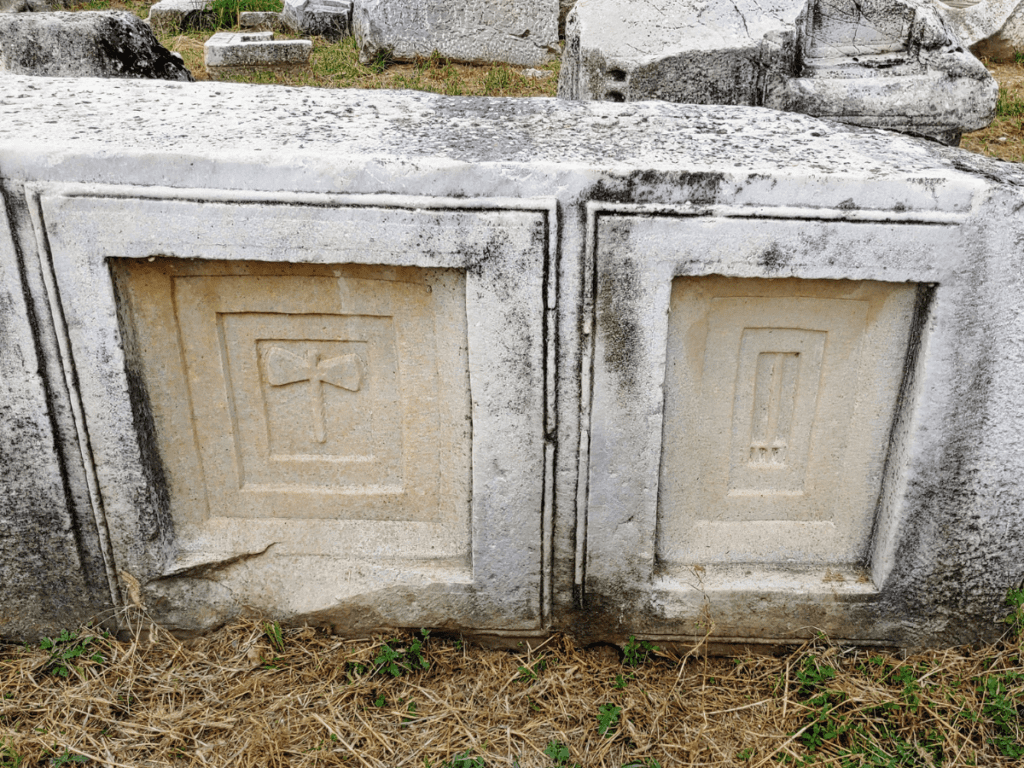
One of the fascinating insights about Lagina is the lack of symbols that we popularly associate with Hekate today. There are no torches or dogs. Instead, there are many flowers and other plants, a turtle, and an eagle, which may be associated with Zeus, who was worshipped here alongside Hekate, though to a lesser extent. Returning to Hekate’s symbols, the ornaments on the Corinthian capitals resemble torches, but they are stylised acanthus leaves, fluted caulis roots, and abacus flowers.
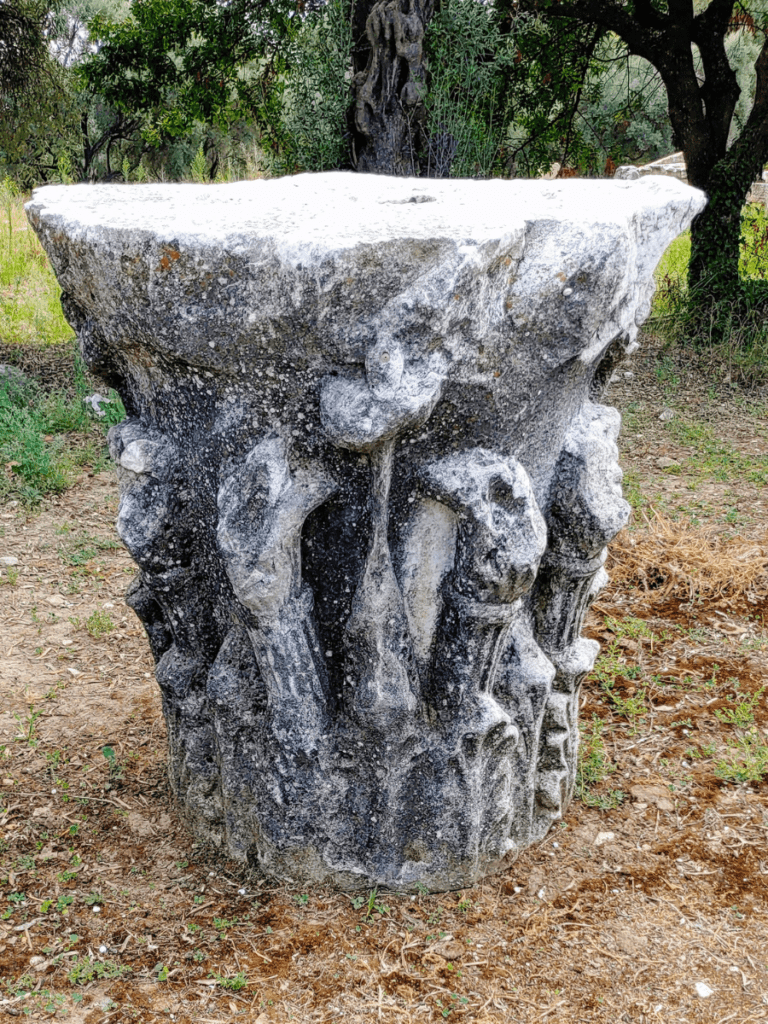
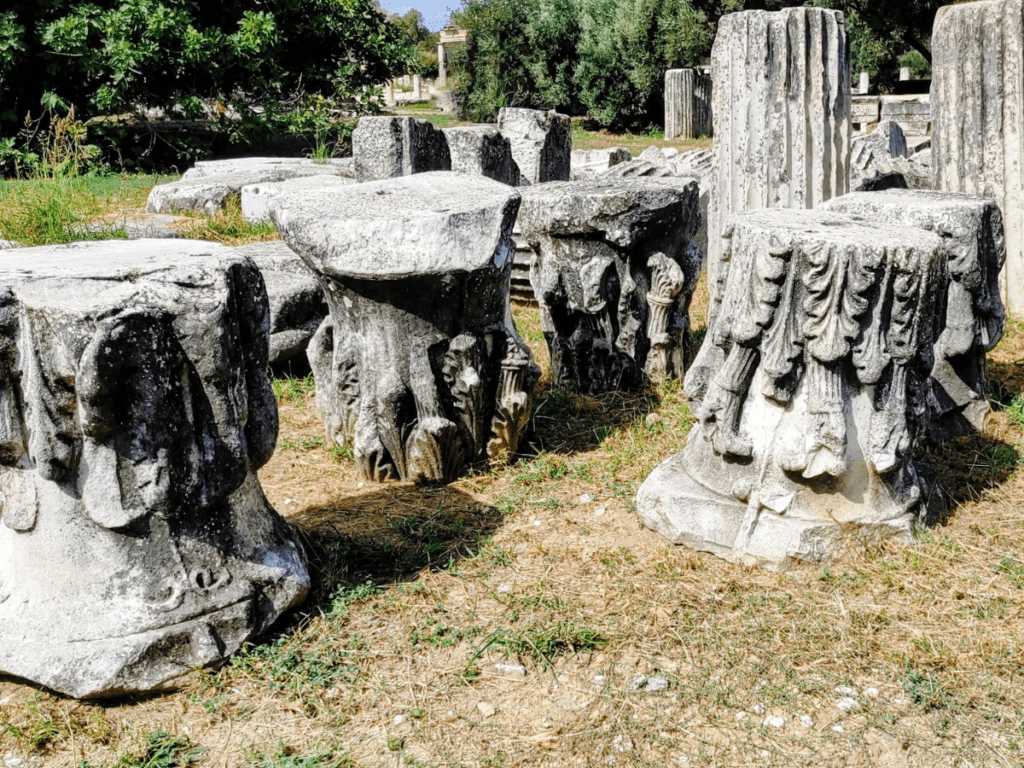
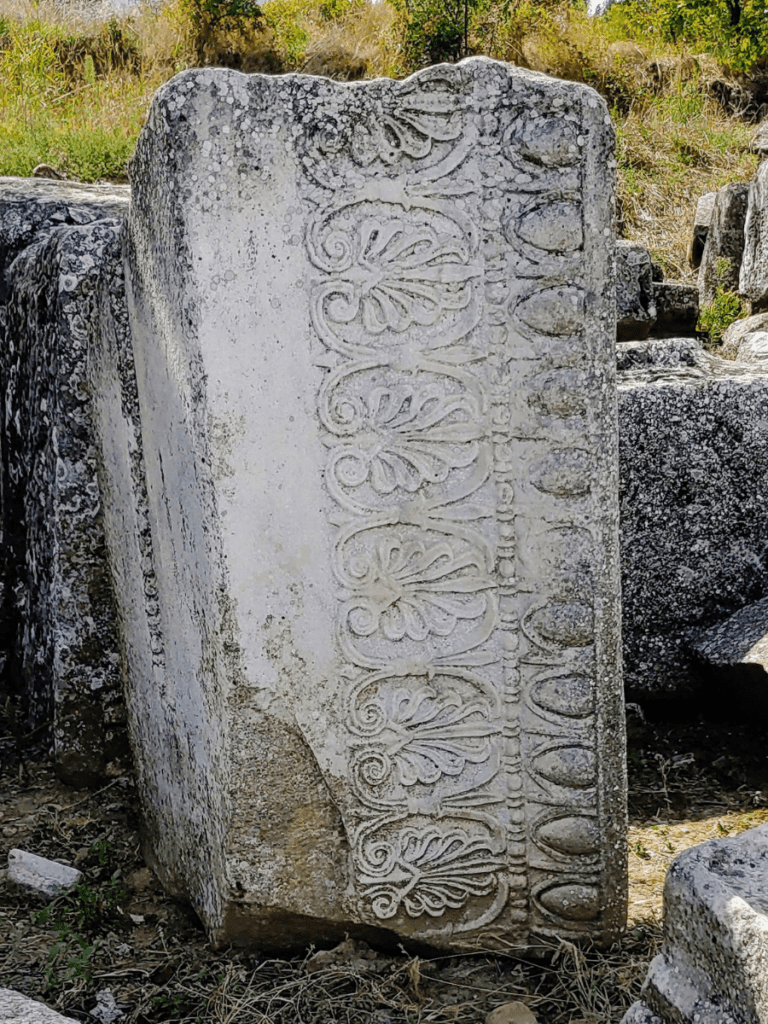
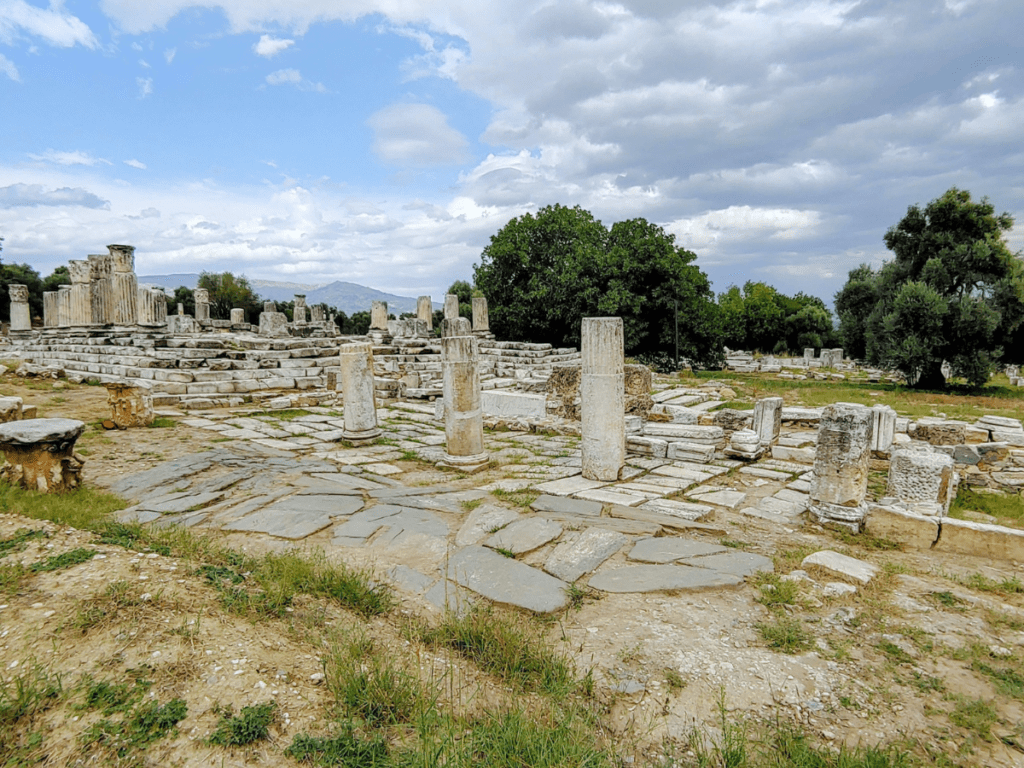
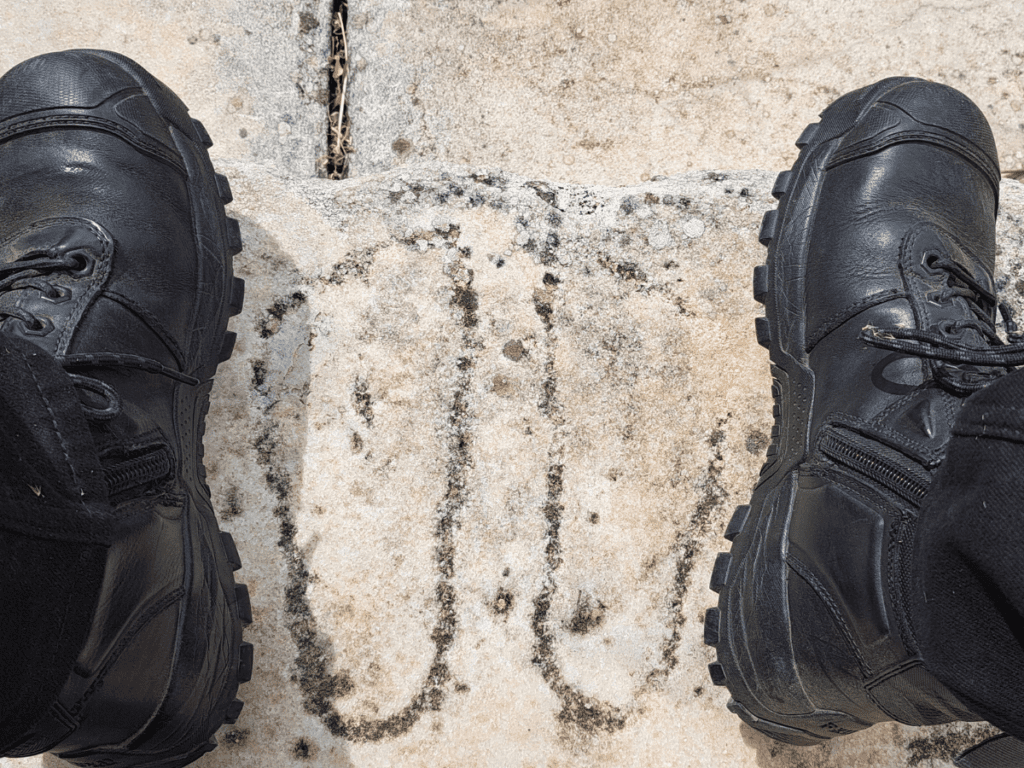
The steps of the temple have carved footprints, plantae pedum. The most common explanation I’ve read for plantae pedum is that they are ex voto, votive offerings to a deity given in fulfilment of a vow. There are some beautiful examples of footprints in Italica, a Roman city in Seville, Spain. Footprints dedicated to Nemesis by gladiators were found at the amphitheatre. This reminded me that Stratonikeia was a city where gladiators trained and spent their lives after retiring.
Carved footprints dedicated to Isis were also found in the theatre at Italica. Other carved footprints dedicated to Isis are at an Iseum in Baelo Claudia, a Roman city in Cadiz, and Dion in Greece. The footprints at Lagina may reflect a conflation of Hekate and Isis.
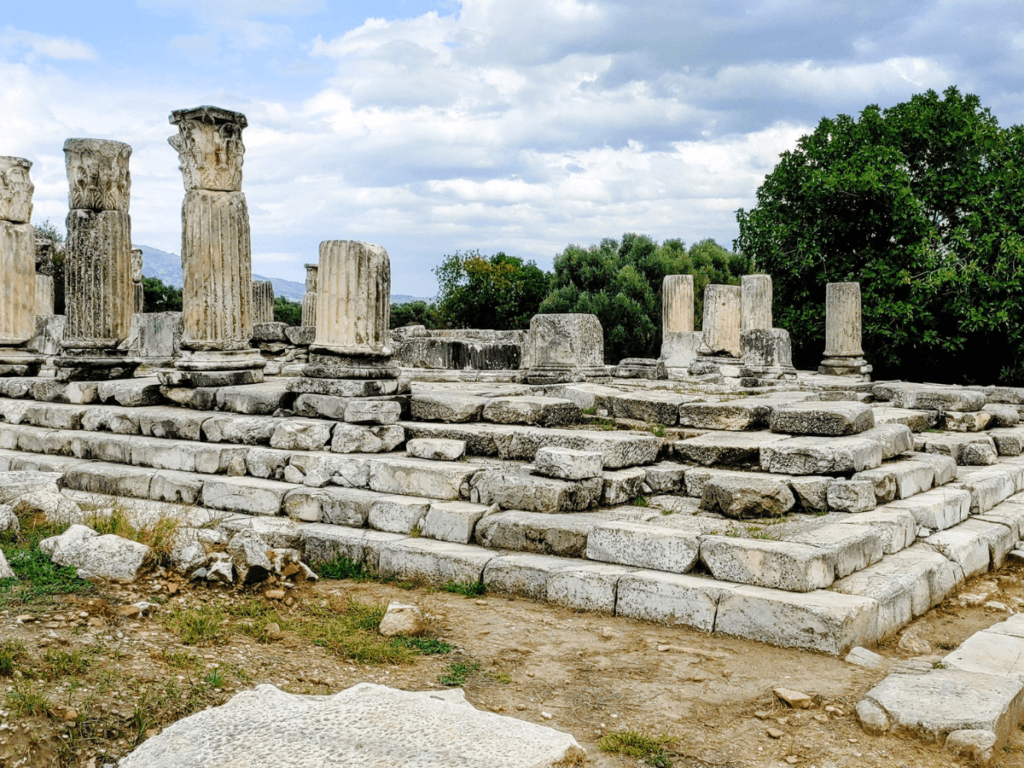
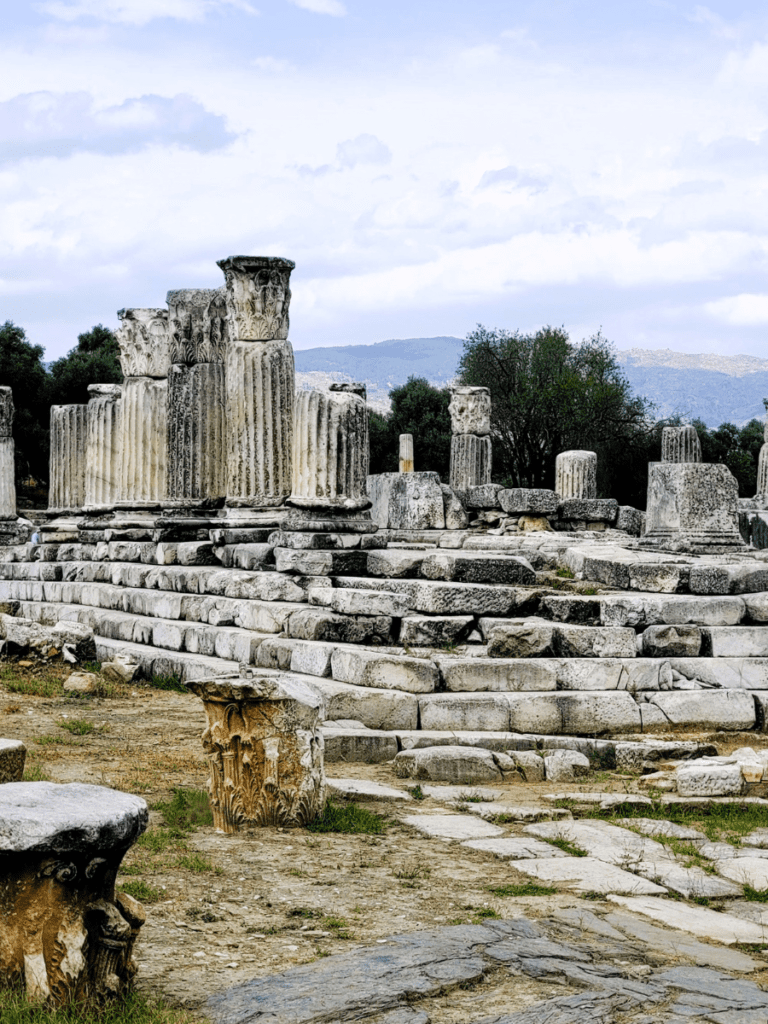
We sat at the top of the steps and talked about some of Hekate’s epithets before climbing down into the naos, the inner chamber of the temple, for our ritual.
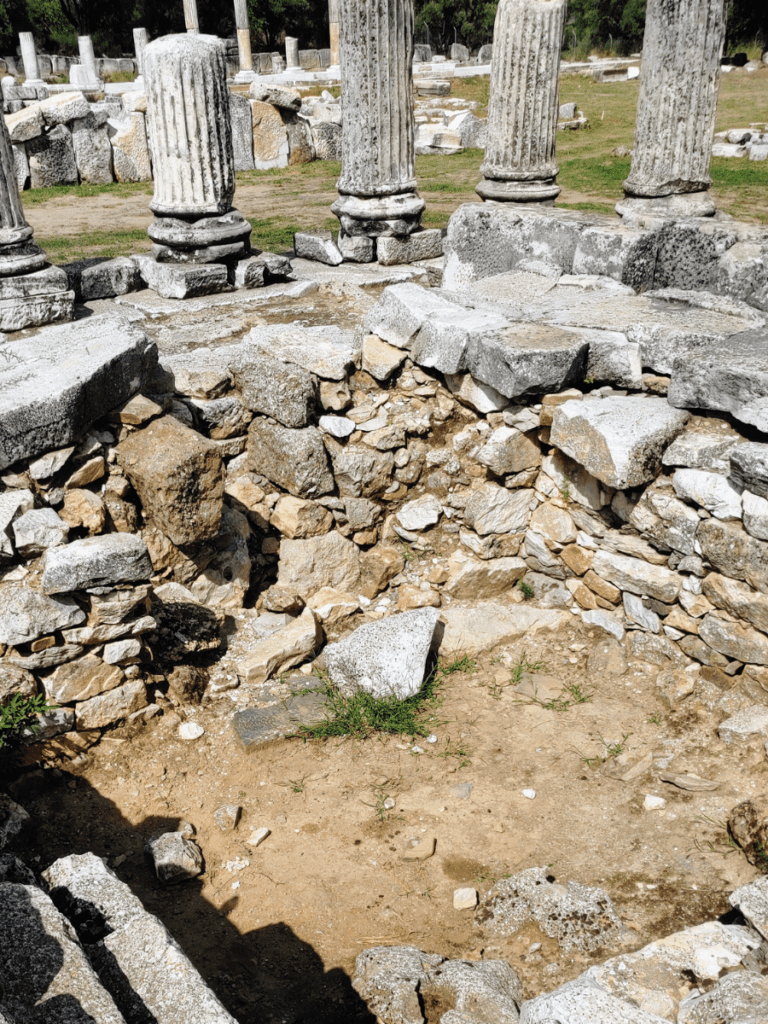
Excavations beneath the floor here have yielded hundreds of coins, fortune-telling stones, terracotta, glass vessels, and gold, bone, iron, and bronze objects, among other things. An ash pit, a wall niche (for a cult statue), fixing plugs for a tripod, grape pollens in the soil (an indicator of wine offerings), and inscriptions in the sacred area suggest an older temple or altar here. Theories about what happened here include that it may have been deliberately closed or destroyed by an earthquake in 365 CE. Interestingly, the place where the niche is located is at the same place as the cult statue in the Hellenistic temple. Pilgrims, like me, continue to make offerings in the cella.
After our ritual, we parted for a while to have time alone in the sanctuary. We left a short bit later, exiting the same way we entered, through the propylon.
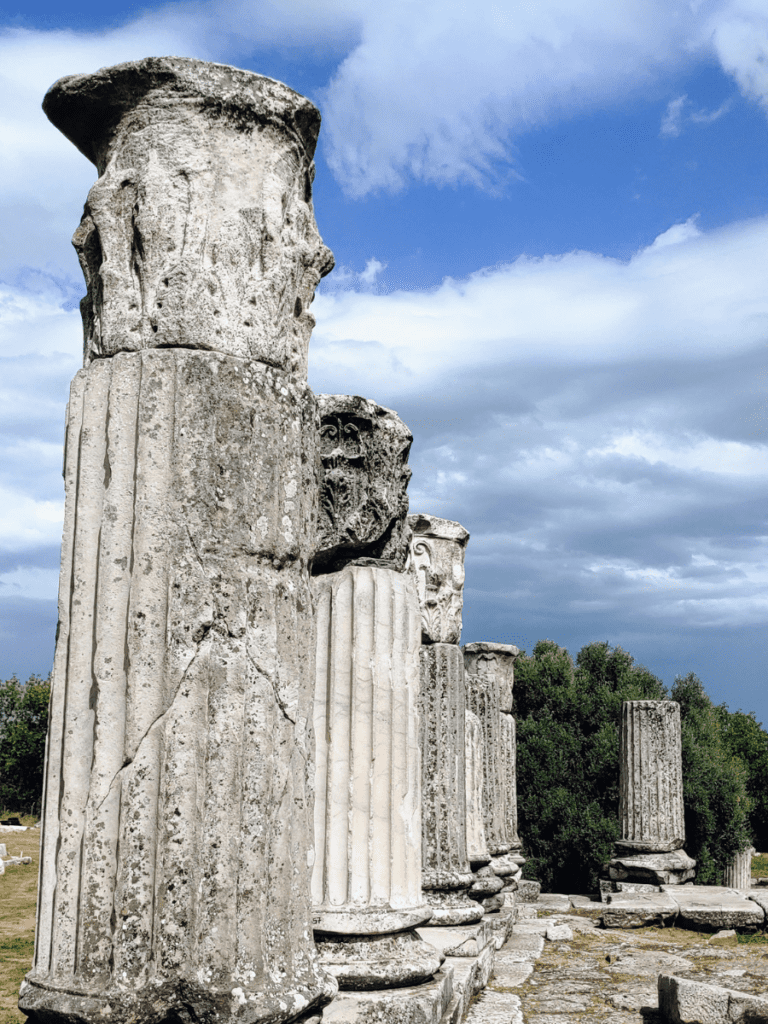
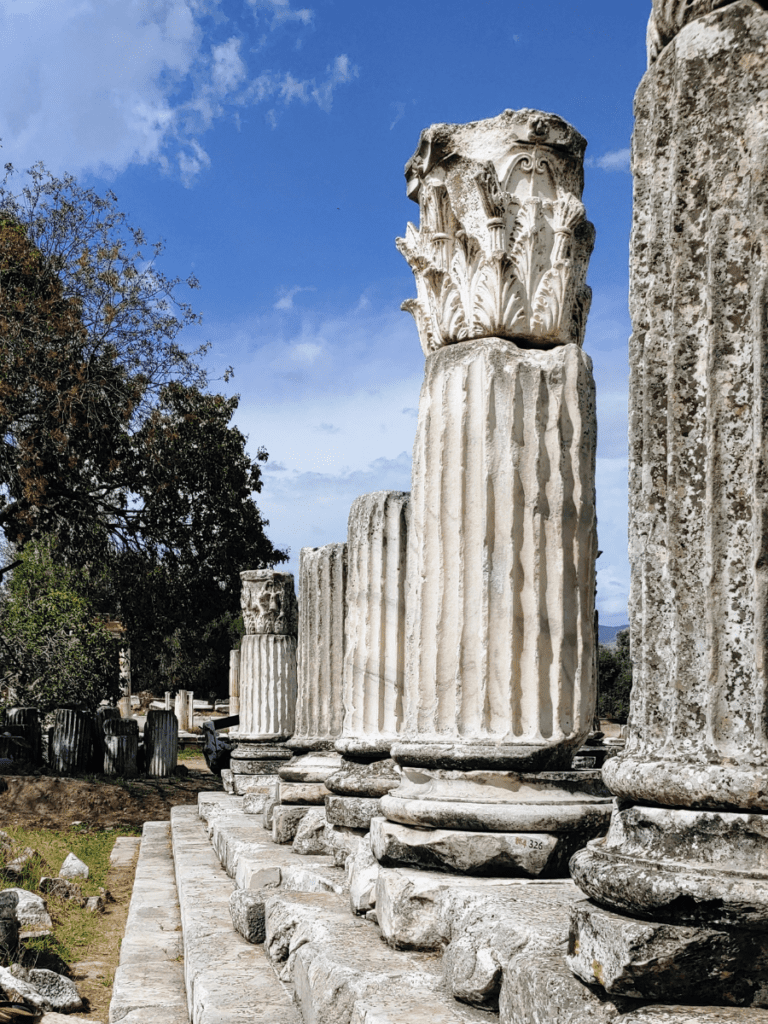
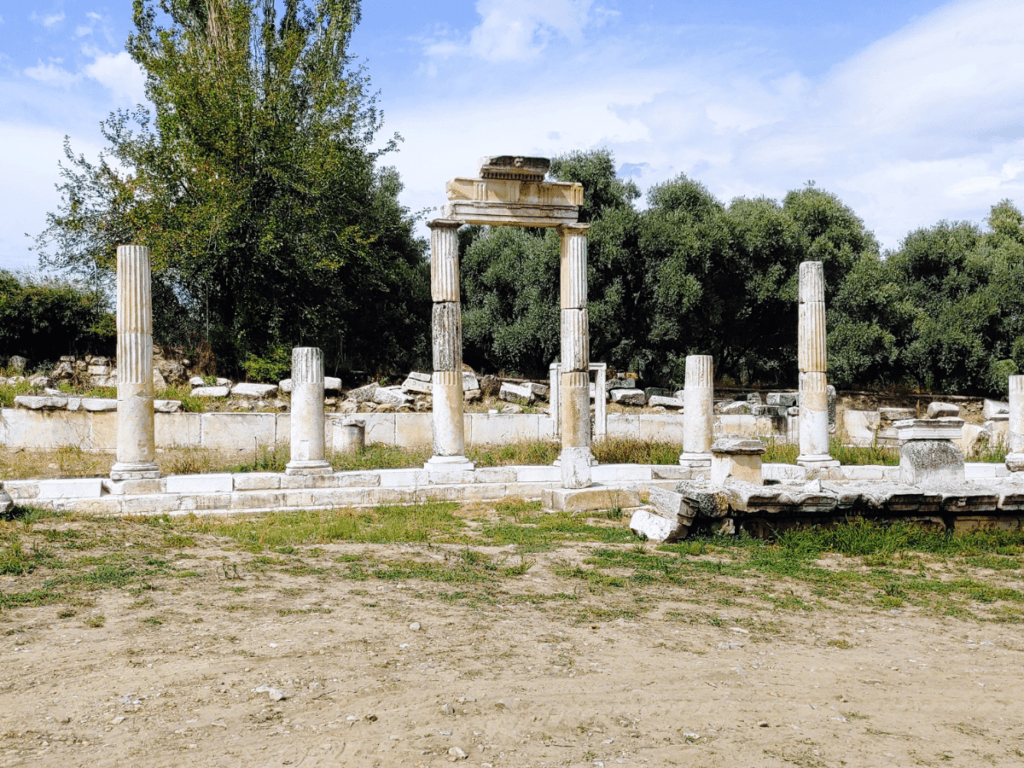
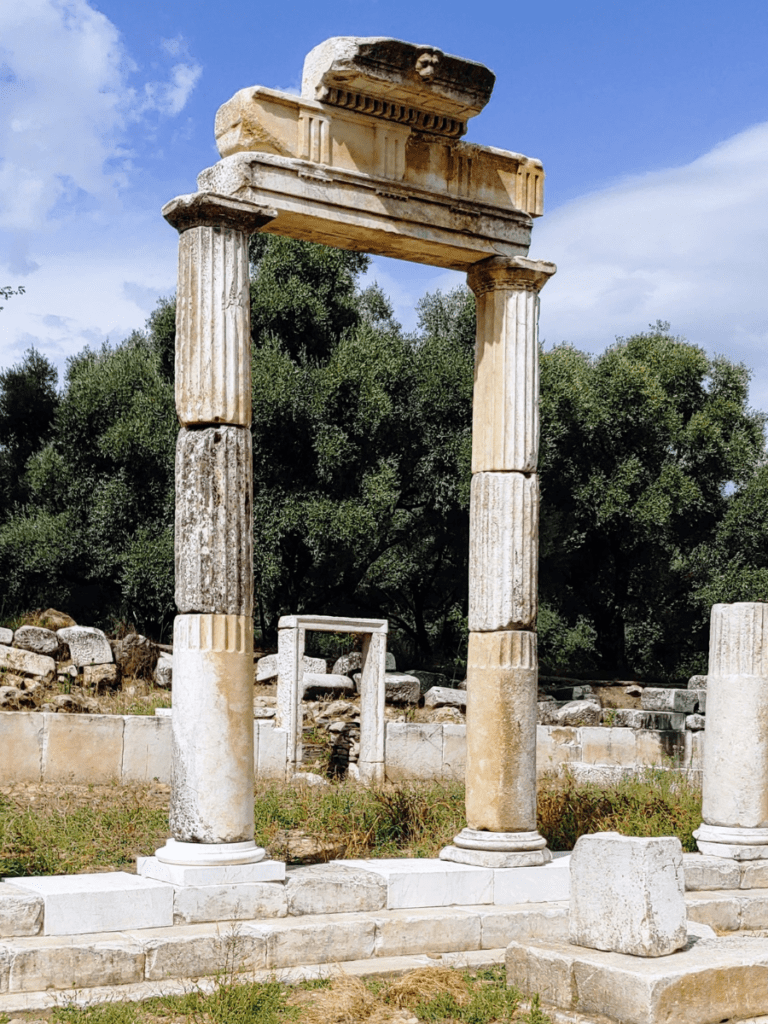
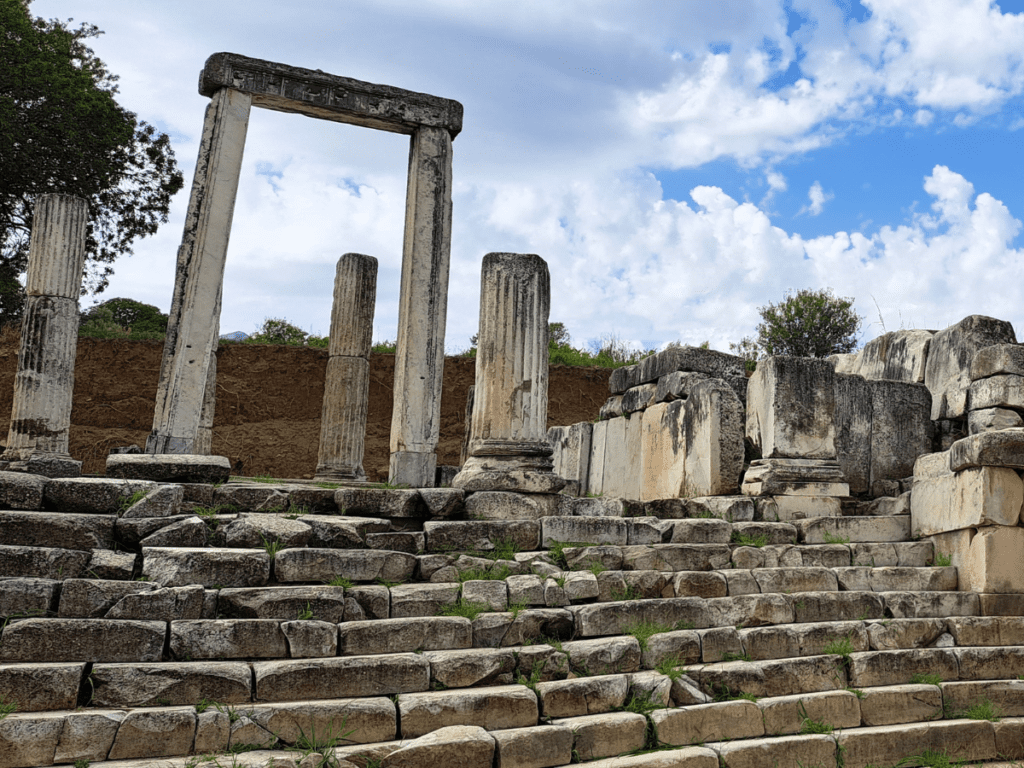
A beginning
I have been dreaming of Stratonikeia and Lagina every night since I visited last month. I’ve been letting it all in and settle. I’ve only just started to reflect and process it all, much less integrate it. This pilgrimage changed my relationship with Hekate. I have new insights, some answers and confirmations, and many more questions.

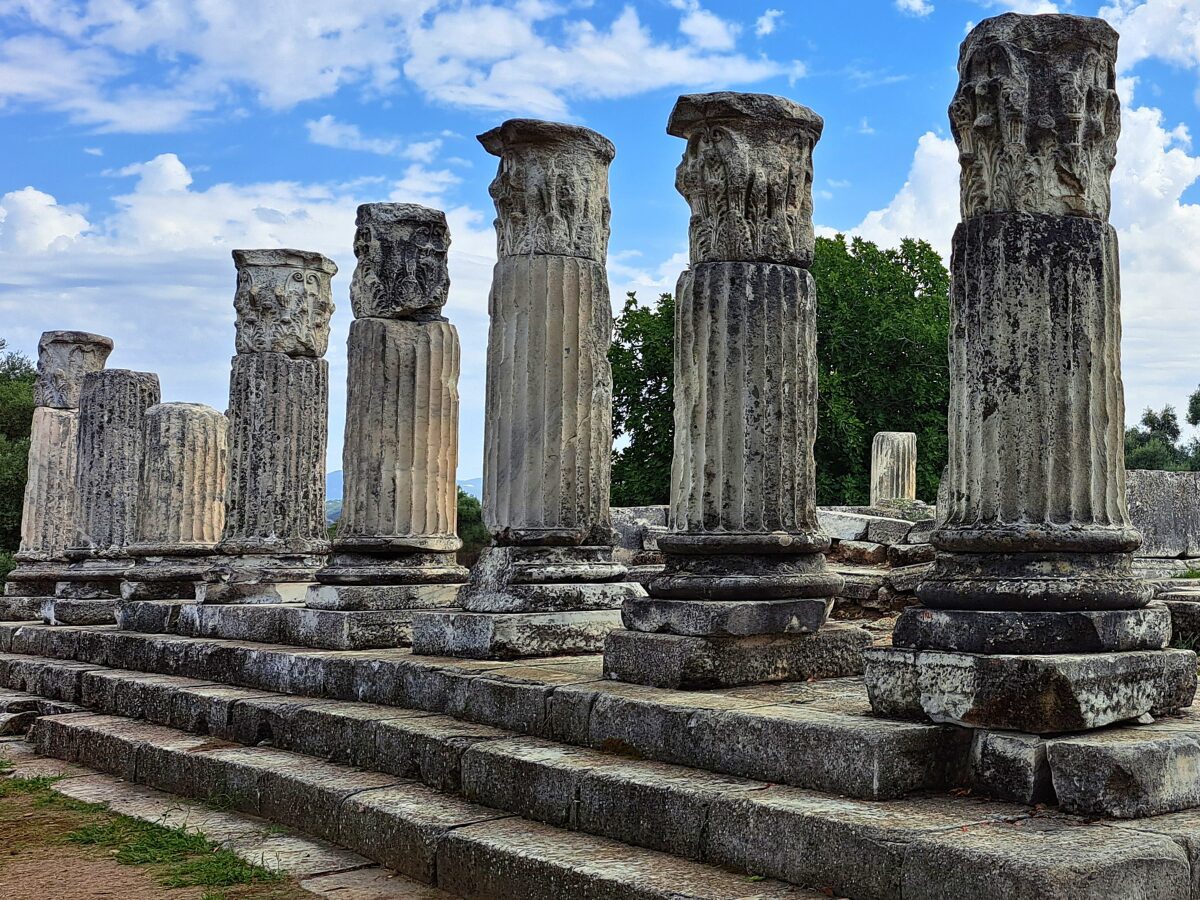
Hello,
I hope this message finds you well. I wanted to reach out, because I wanted to get more information about how to visit Hacate’s temple. Can anyone go? Is there lodging near by? Any information would be truly appreciated. I would be traveling from Sweden if that helps. Thank you and have a blessed day.
Hi Silvia. Yes, you can visit the city of Stratonikeia and the temple at Lagina like any other place, typically from about 9 am to sunset. They are about 15km apart. Stratonikeia is large, and there is a cash fee to enter. Lagina is a much smaller site that was free to enter when I went in 2023. You could visit both sites in one day, but it would be better if you had two days. Both are active archaeological sites, and you will see teams working.
Abdullah Demirell is the guardian of Lagina. He’s very kind and sympathetic to devotees. He can show the site, answer questions, and show you where to make offerings if you’d like to do that. He doesn’t speak English (or Swedish), but you can use Google Translate. Let me know if you’d like his phone number. You can contact him on WhatsApp. He’s a local and knows the area well.
Look for accommodations in Muğla. I stayed at the Uyku Vadisi Hotel, which is beautiful and rustic and has a great staff (and food), but it’s about an hour from Stratonikeia and Lagina (a bit in the middle of nowhere). Muğla is a city with many options and about 35-40km from Stratonikeia and Lagina. You will need a car to get around.
I hope this helps! Let me know if you any other questions.
Absolutely beautiful. It must have been enchanting to really stand there. It’s even moving to see photos!
Thank you! Yes, it was very special to visit and I long to return.
Hey Cosette! Came across this when browsing before my own pilgrimage with Yeshe in April. Beautiful photos. I can barely contain myself with excitement!
Hi! Wow what a beautiful and encouraging read. Thank you so much for sharing this. I’m visiting in May and working to make the visit as conscientious as possible. Any connection with Abdullah you’d be willing to provide would be greatly appreciated!
Jestem kapłanką inicjowaną do tradycji wicca aleksandryjskiej.
Wraz z przyjaciółmi z covenu lecimy 10 sierpnia do Bodrum, by 13 sierpnia (w dniu święta Hekate) stanąć w świątyni w Laginie i oddać pokłon Bogini. Bardzo się cieszę, że znalazłam twoją stronę z tak pięknymi opisami tego świętego miejsca.
Oczywiście poproszę cię o numer telefonu do strażnika.
Pisz dalej i opisuj swoje podróże.
Z przyjemnością będziemy o nich czytać i czerpać inspirację.
Pozdrawiam serdecznie.